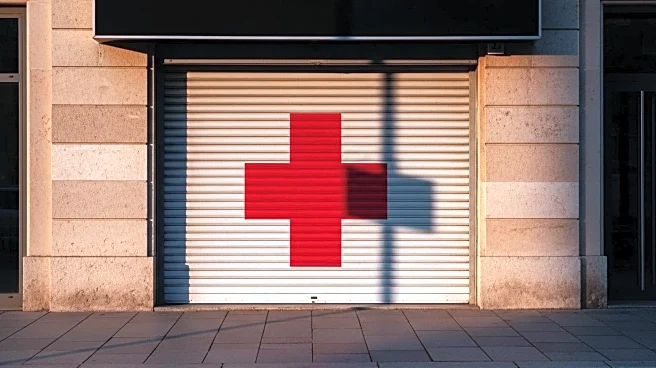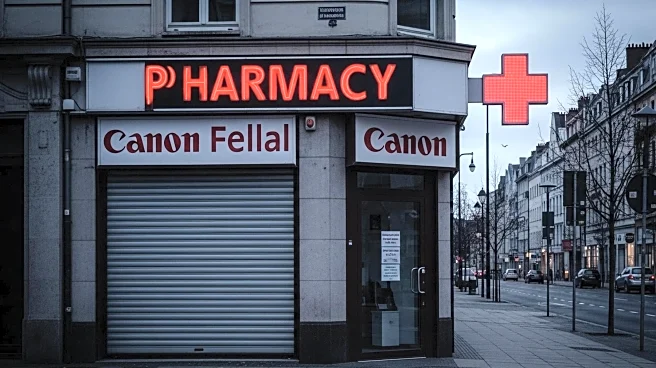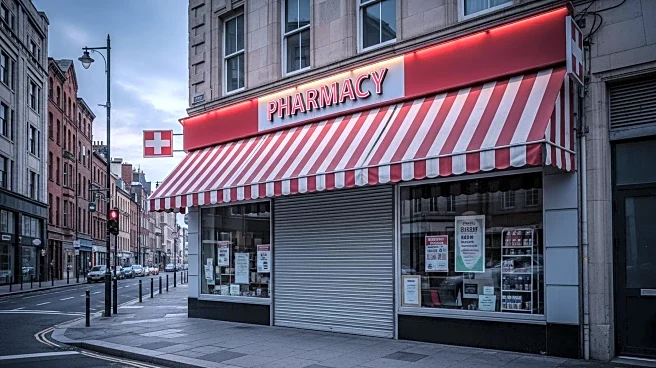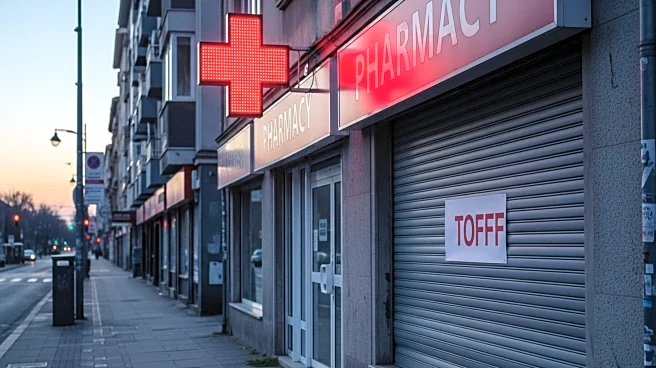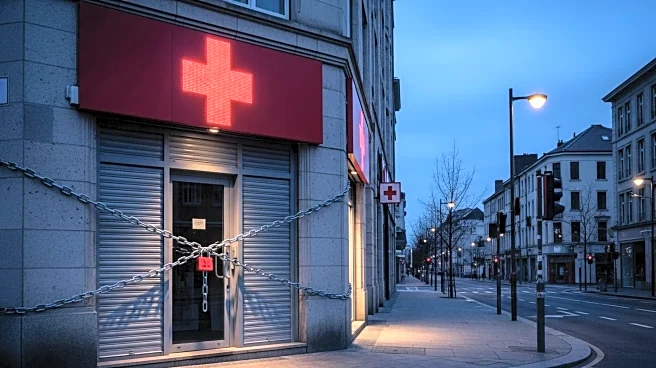What's Happening?
Rite Aid has closed all its stores nationwide after decades in business, following its second bankruptcy filing in May 2025. The company, which operated over 1,200 stores across 15 states, has faced financial difficulties, including declining sales and mounting debt. Additionally, Rite Aid has been embroiled in legal challenges related to opioid prescriptions, with the U.S. Department of Justice accusing the company of filling unlawful prescriptions. Despite securing financing to remain operational during bankruptcy proceedings, Rite Aid ultimately decided to close its doors, affecting numerous employees and customers.
Why It's Important?
The closure of Rite Aid stores represents a significant development in the U.S. pharmacy sector, affecting both the workforce and consumers who depended on its services. The shutdown underscores the challenges faced by traditional pharmacies in navigating financial pressures and legal issues, particularly in relation to opioid prescriptions. Competitors like CVS and Walgreens may benefit from increased market opportunities as they acquire former Rite Aid locations. The closure also impacts ongoing legal proceedings, as Rite Aid's bankruptcy pauses many opioid-related lawsuits.
What's Next?
With Rite Aid's closure, the focus will be on the redistribution of its assets and the resolution of legal claims through the bankruptcy process. Customers will need to transfer their prescriptions to other pharmacies, while former employees may seek new job opportunities. The closure may lead to further consolidation in the pharmacy industry, with competitors potentially expanding their presence in areas previously served by Rite Aid. Additionally, the legal proceedings related to opioid prescriptions will continue to unfold as part of the bankruptcy claims process.

